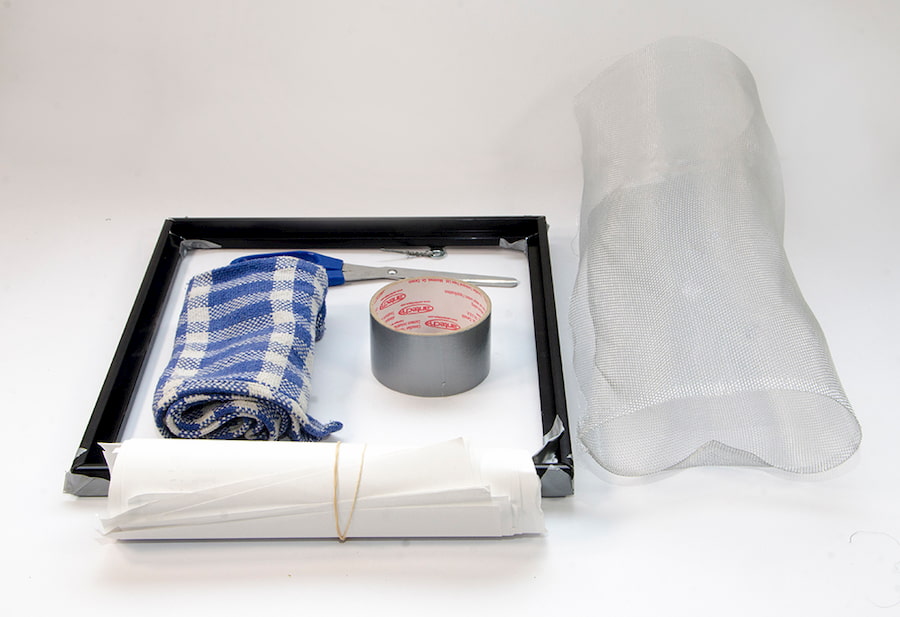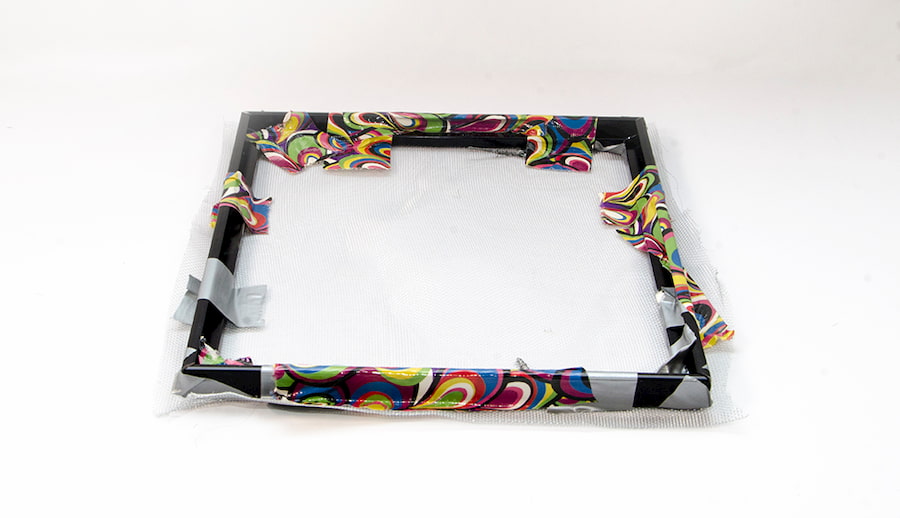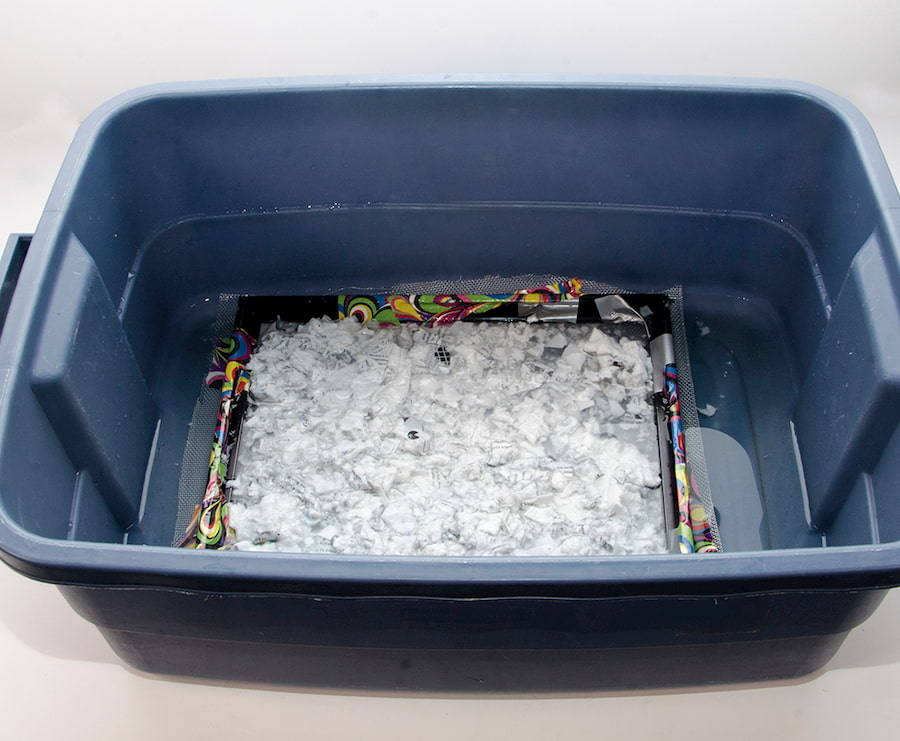Make your own paper
Share :
What you need
- A sturdy picture frame (the size you want your paper to be)
- A sheet of screening (can be bought at hardware stores)
- Duct tape
- Scissors
- Shallow bin (bigger than your frame)
- Tap water
- Used paper (printer paper works best)
- Heavy books
- Absorbent cloth or paper towel
- Towel
- Bowl
- Optional: Blender, food processor, or mortar and pestle
Safety first!
Adult supervision may be needed when using scissors. Be careful of the edges of cut screening; it can be quite sharp.
Make it
Make the frame
- Create your mould by laying the picture frame (without its backing or glass face) over top of the screening. Cut the screening to just a bit larger than the frame.
- Duct tape the screening to the outside of the frame. Make sure the screening is stretched as taut as possible.
Make the pulp
- Rip your used paper into reasonably small pieces.
- Put your ripped paper inside your blender or mortar and pestle, along with enough warm water to completely cover it. Blend it all together. If using a blender or food processor, make sure to slowly pulse it. If you have neither, put the paper inside a bowl with warm water and mash it to a pulp with your hands.
Make the paper
- Fill the bin about halfway with warm water.
- Put your mould inside the shallow bin, screen side down.
- Pour your blended mixture on top of the mould. Bring the mould to the surface of the water.
- Move your mould back and forth gently, to even out your mixture. You can also use your fingers to even out any spots that need it.
Test it
Lift the mould out of the water, and place it on the towel. Wait one minute, and then use your cloth or paper towels to dab out any excess water. Leave until completely dry.
Explain it
When you blend your pulp, the water softens the fibres of the paper, enabling them to mix. Then, when you lift your screen up, the small and unwanted particles are filtered out. This process leaves you with clean, malleable pulp that joins together to make one full sheet of paper.
Observe it
When you put paper into your city-collected recycling bin at home, the process that is used to recycle it into new paper is actually quite similar to your at-home version. The old paper is turned into a pulp by a pulper, just like a blender or mortar and pestle. Then, it is passed through a screen to get rid of the unwanted parts. Although the machinery is a lot more complex because of how much paper needs to be made, it works on exactly the same principles.
Go further
You can make your own custom, decorative paper by adding materials during Step 7 (above). You can try adding flower petals, confetti, pressed plants — anything you can think of! It’s best to use thin materials, as they do not cause the paper to rip.




